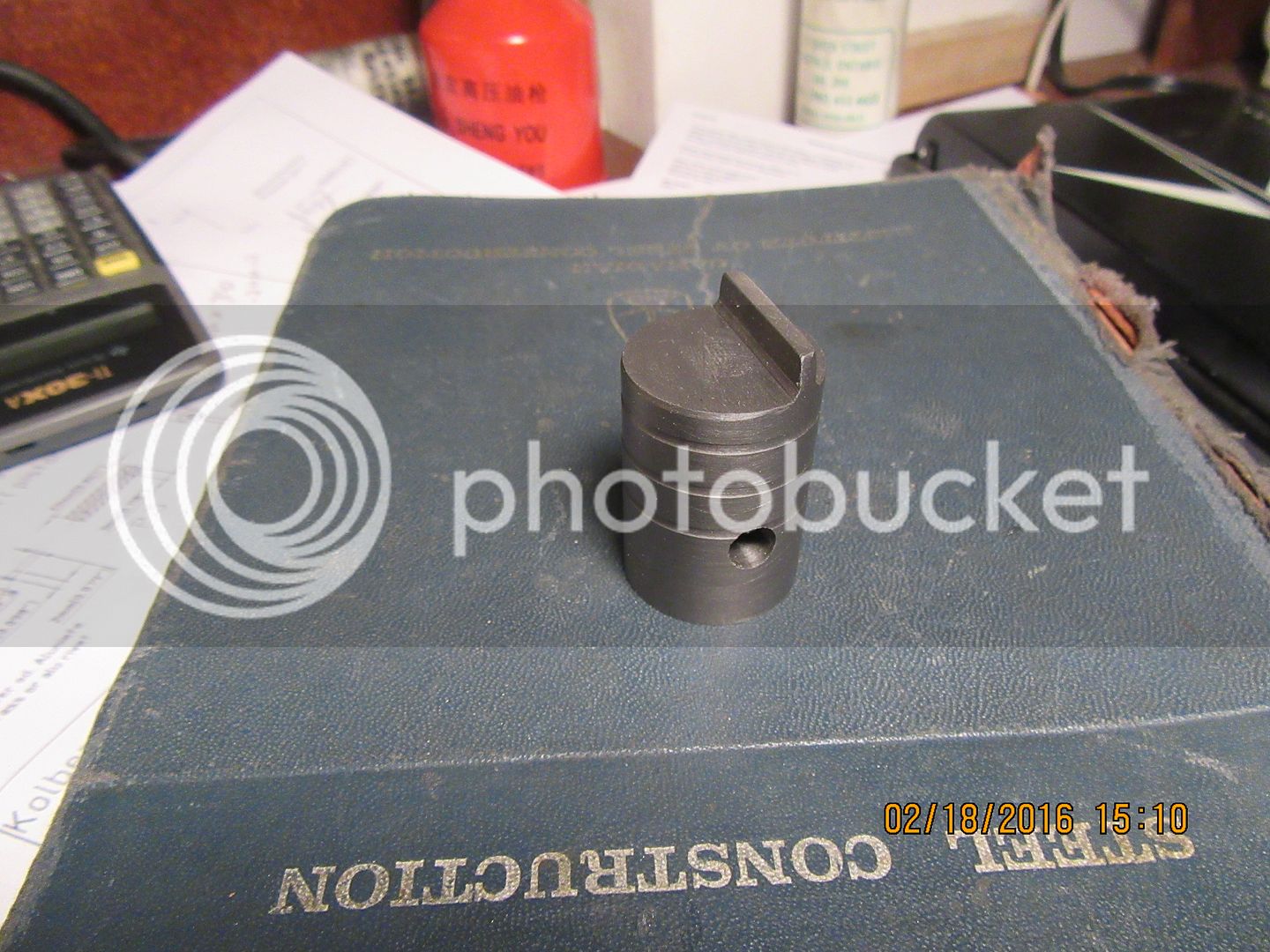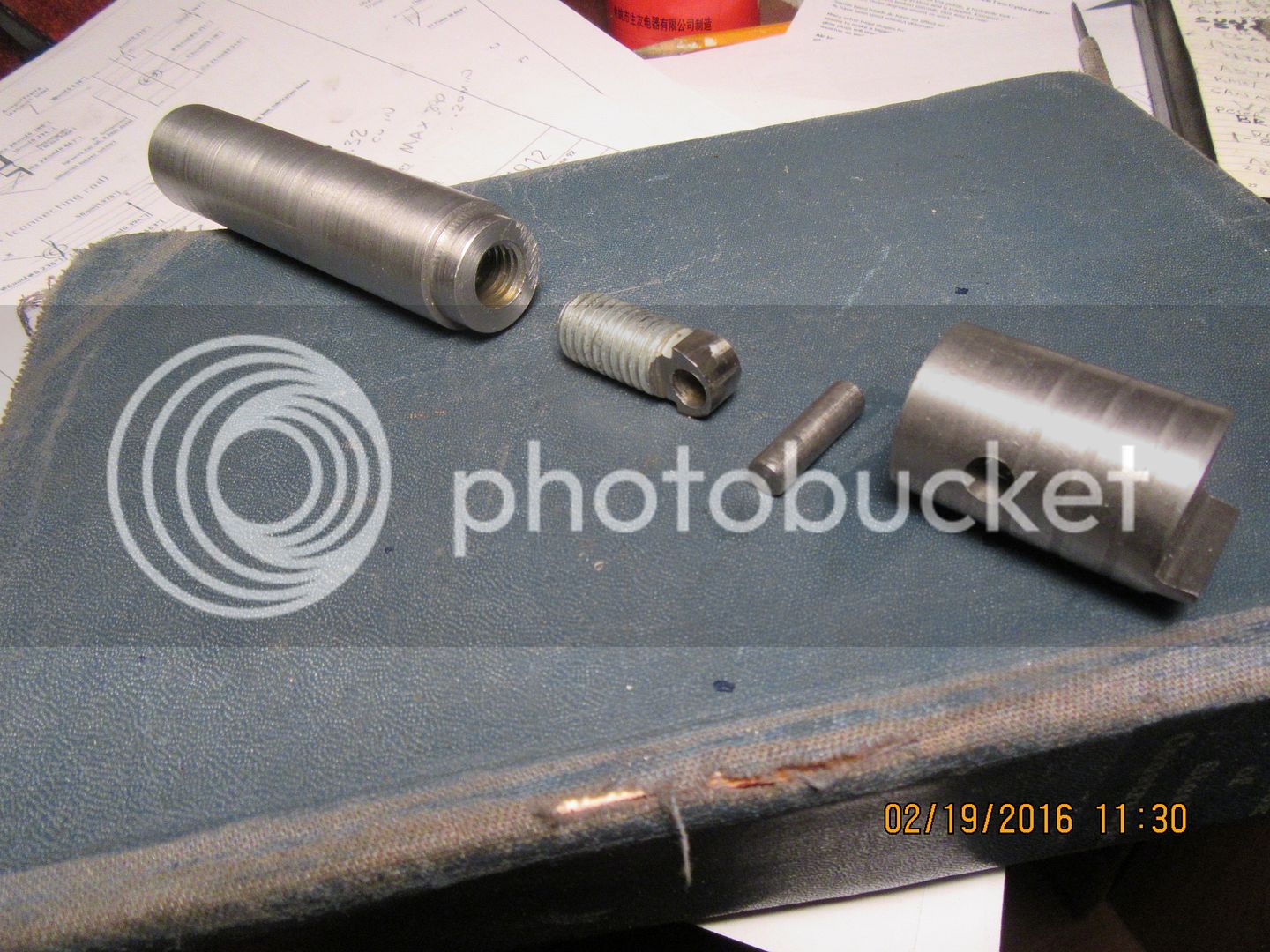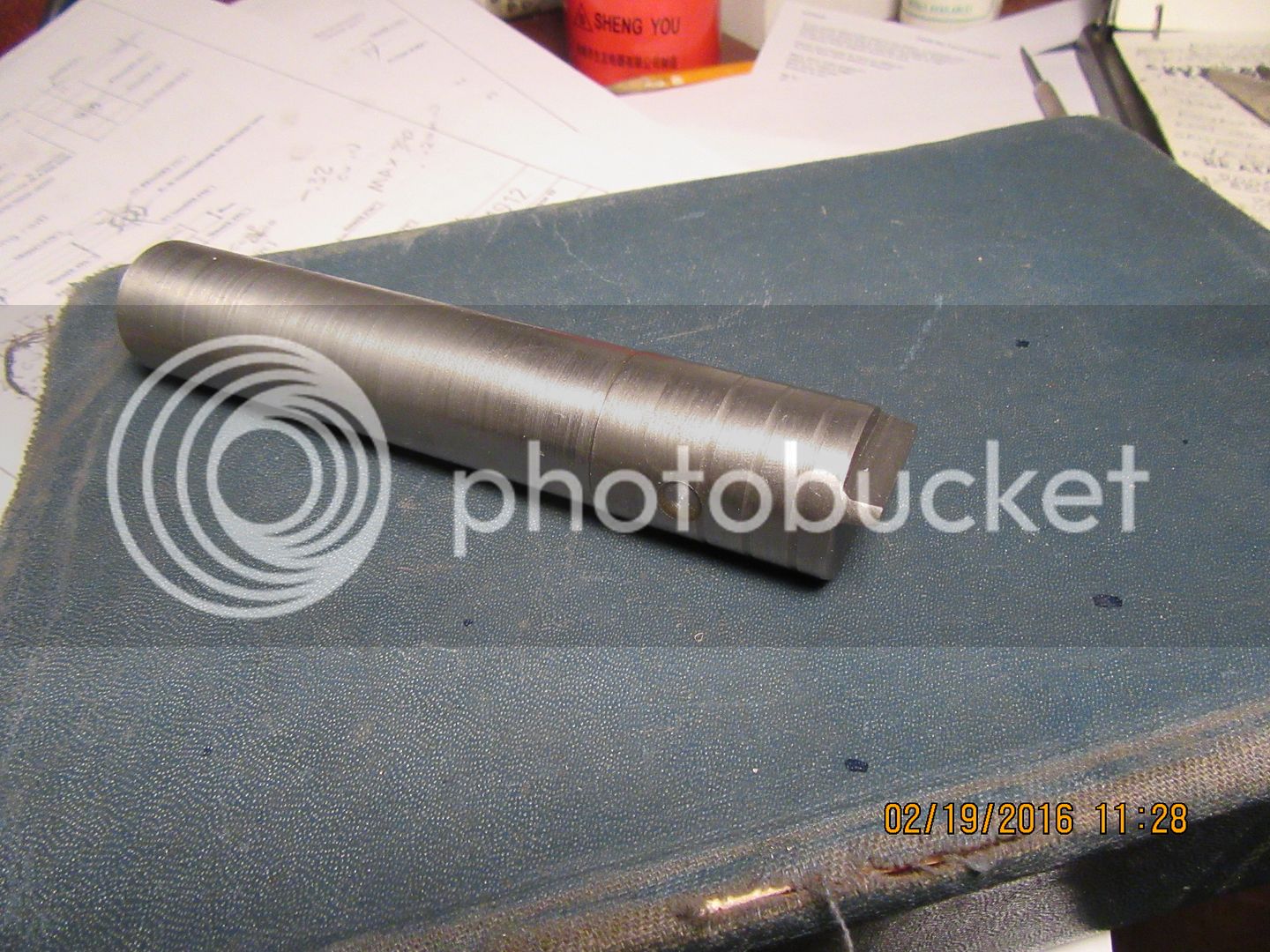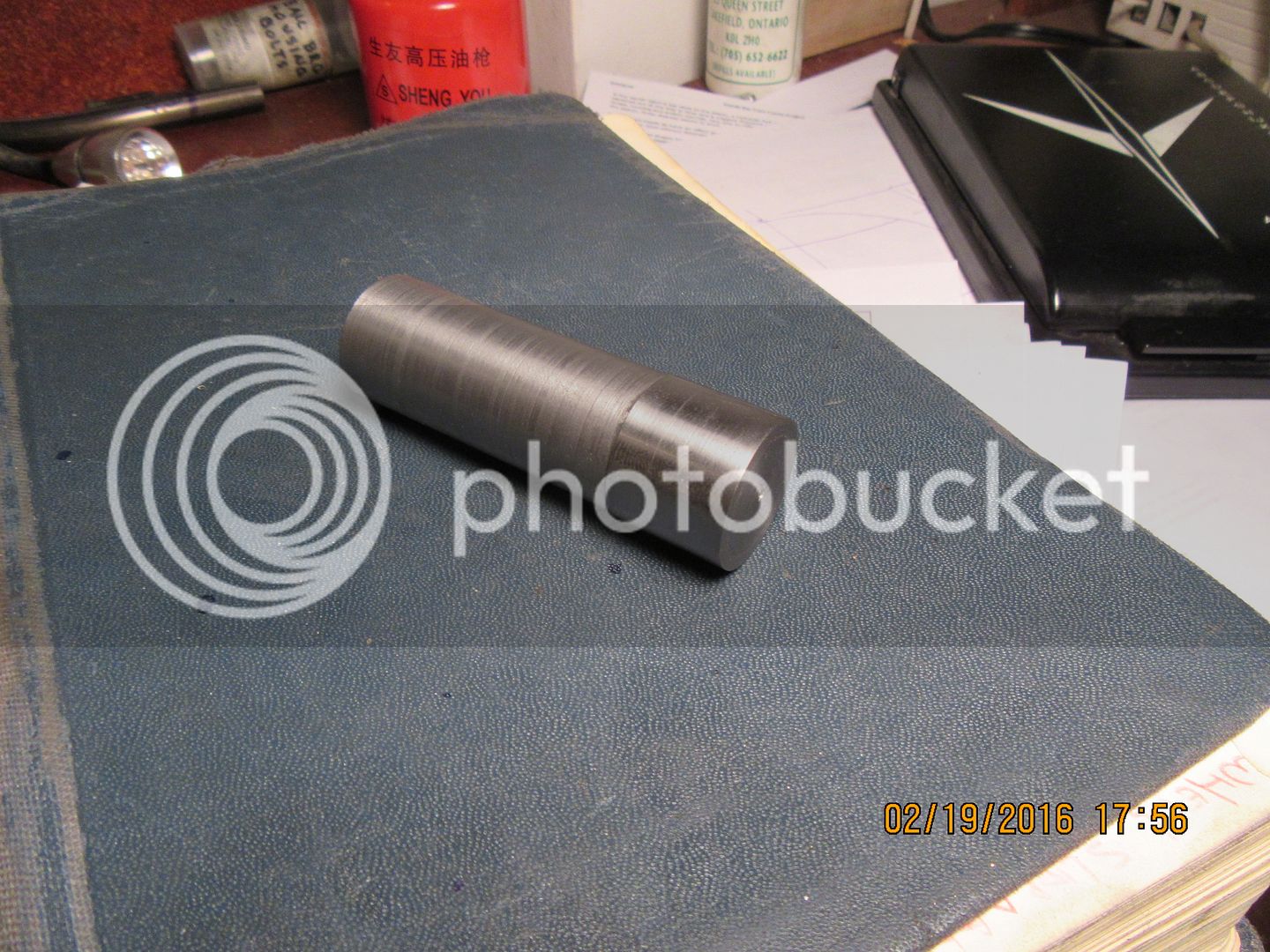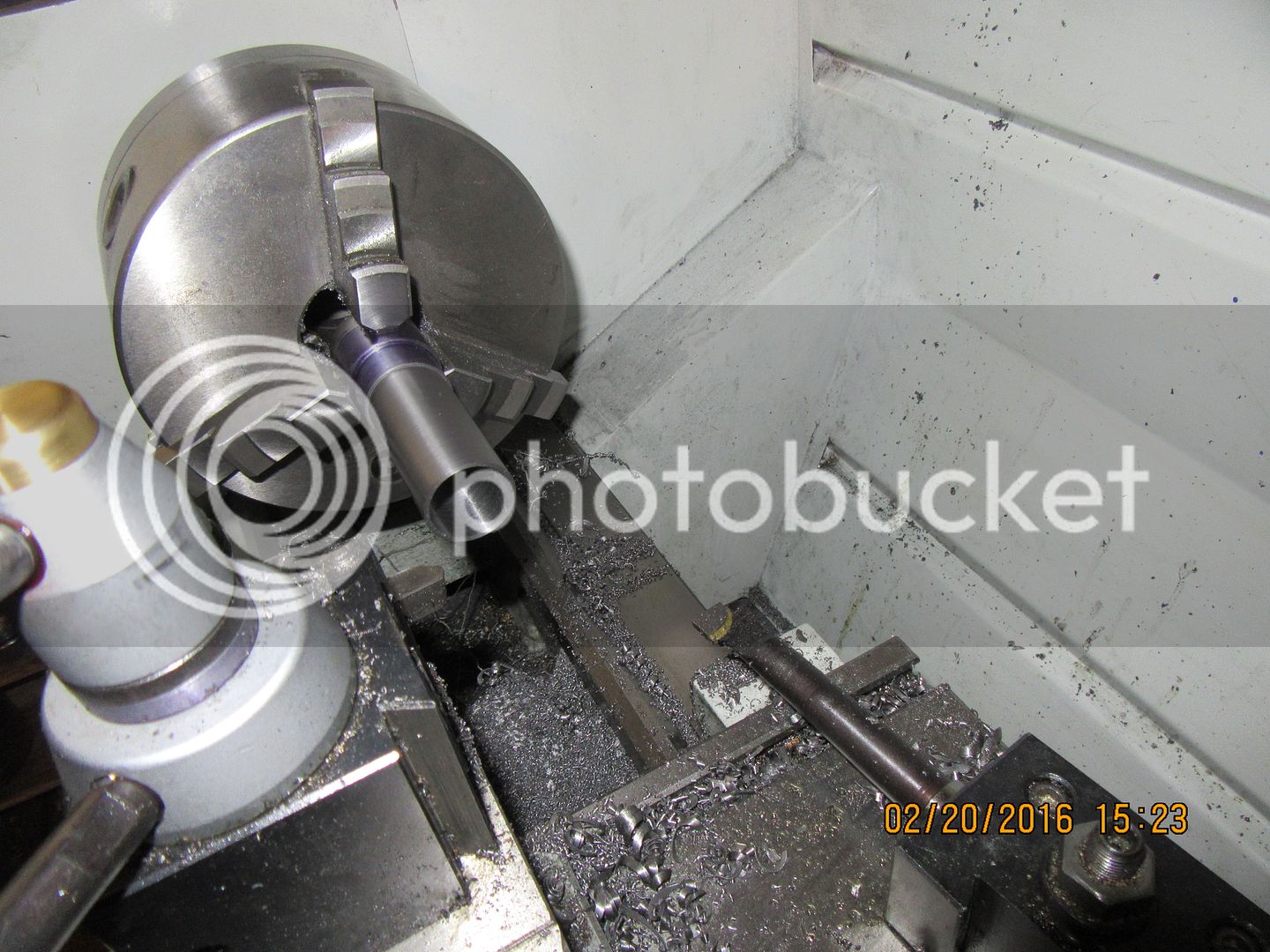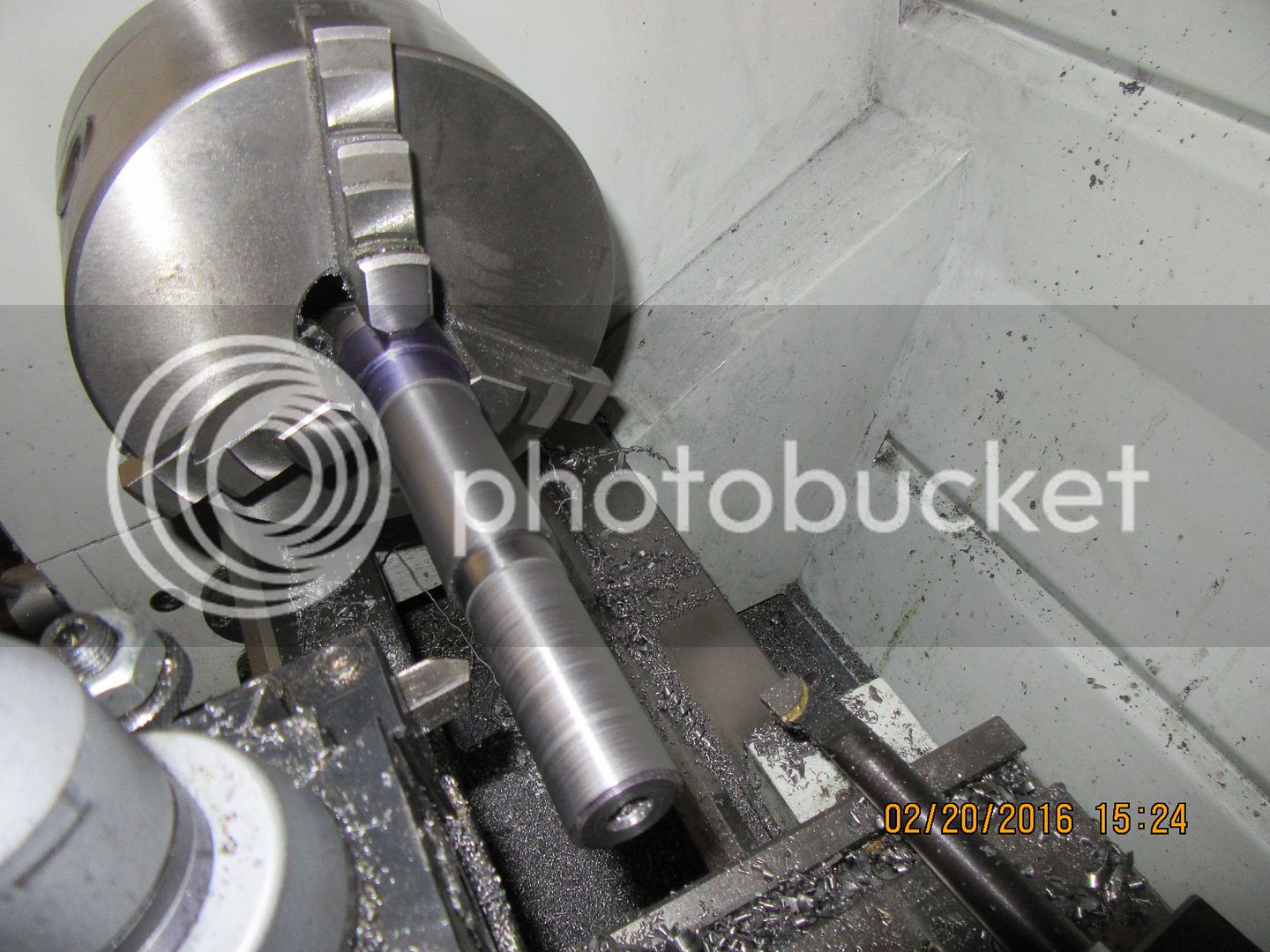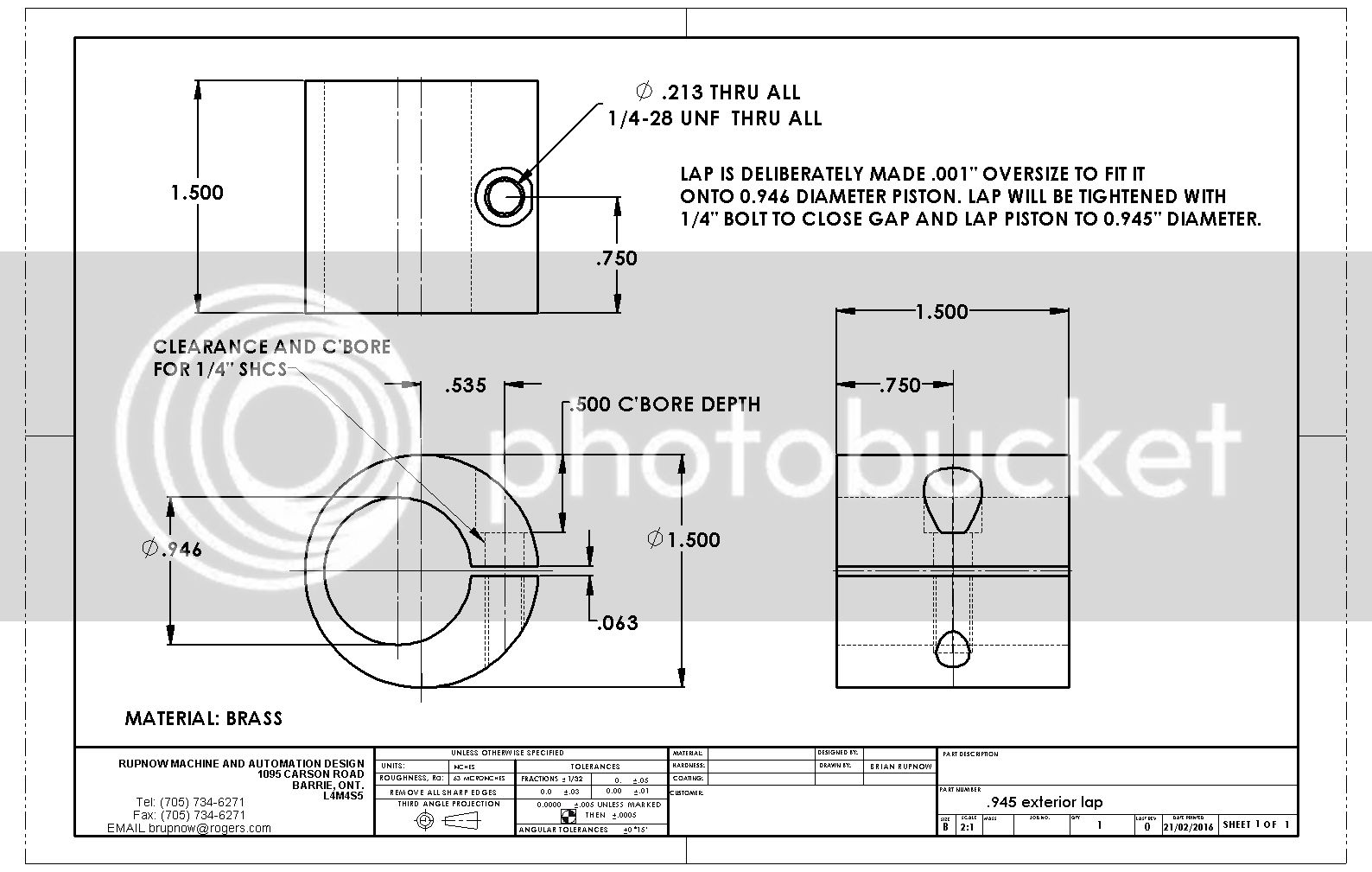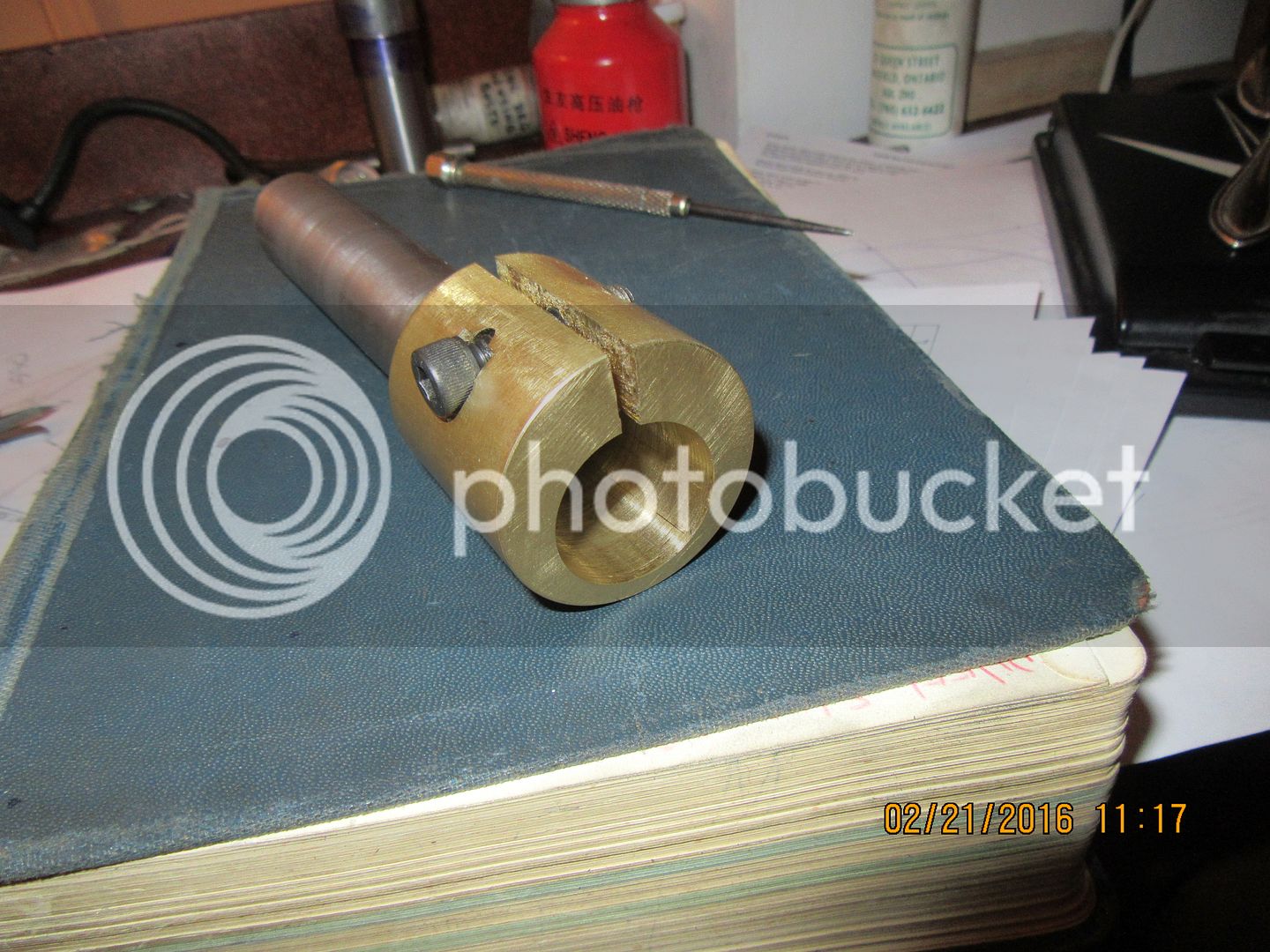At this point I attach a T handle to the piston, using a temporary brass "wrist pin" and using a solution of very little fine diamond paste with a lot of kerosene, lathe not running, I wring the piston in and out of the cylinder by hand, untill I feel it enter freely up as far as the exhaust ports ,then with increasingly more friction as it reaches top dead center in the cylinder. This can be adjusted by just how much lapping I do of the piston into the cylinder. When I am happy with the fit, I then part off the liner from it's chucking stub.---Have I got the sequence right???---Brian
I am in agreement as far as this bit. I would not myself lap the two parts together, but carry on with the external lap to produce the required fit. I would worry that lapping them together might produce too loose a fit. I think the fit you require may well not allow room for abrasive between the parts. I think if you start as tight as you say, you risk a seize-up in the middle of the job. But, I am not very sure of my ground.





